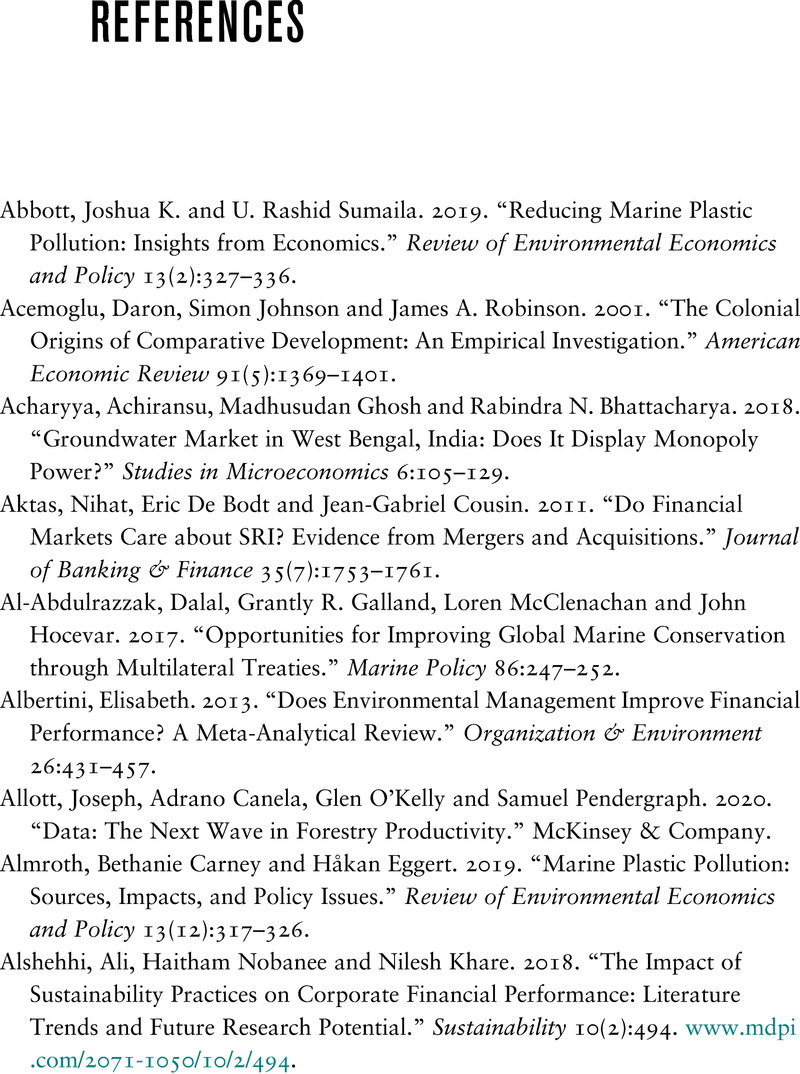Book contents
- Economics for a Fragile Planet
- Economics for a Fragile Planet
- Copyright page
- Dedication
- Contents
- Figures
- Tables
- Preface
- Acknowledgments
- 1 Introduction
- 2 Humankind and the Planet
- 3 Economics for a Fragile Planet
- 4 Climate Change
- 5 Land Use Change and Biodiversity
- 6 Freshwater
- 7 Oceans and Coasts
- 8 Public Policies
- 9 Business
- 10 Conclusion
- References
- Index
- References
References
Published online by Cambridge University Press: 24 March 2022
- Economics for a Fragile Planet
- Economics for a Fragile Planet
- Copyright page
- Dedication
- Contents
- Figures
- Tables
- Preface
- Acknowledgments
- 1 Introduction
- 2 Humankind and the Planet
- 3 Economics for a Fragile Planet
- 4 Climate Change
- 5 Land Use Change and Biodiversity
- 6 Freshwater
- 7 Oceans and Coasts
- 8 Public Policies
- 9 Business
- 10 Conclusion
- References
- Index
- References
Summary

- Type
- Chapter
- Information
- Economics for a Fragile PlanetRethinking Markets, Institutions and Governance, pp. 281 - 317Publisher: Cambridge University PressPrint publication year: 2022

